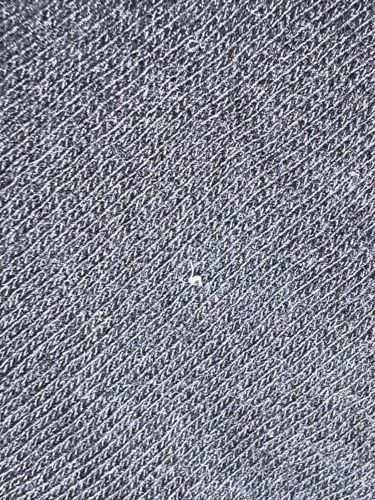Clothing Moth Larva (possibly Case-bearing or Webbing)
Scientific Name: Tineidae family (e.g., Tinea pellionella or Tineola bisselliella)
Order & Family: Lepidoptera, Tineidae
Size: Larvae typically 0.5 - 1.5 cm (0.2 - 0.6 inches) in length.

Natural Habitat
Indoors, particularly in dark, undisturbed areas such as closets, attics, storage chests, and behind furniture where natural fibers are present.
Diet & Feeding
Keratin-based materials, including wool, silk, fur, feathers, cashmere, and other animal fibers. They also feed on lint, dust, and synthetic blends containing natural fibers.
Behavior Patterns
Larvae cause damage by feeding on natural fibers. Case-bearing moth larvae (Tinea pellionella) construct a silk case that they carry with them, while Webbing moth larvae (Tineola bisselliella) spin silken tunnels or mats as they feed. They avoid light and are often found in secluded areas. The adult moths do not feed, but reproduce and lay eggs.
Risks & Benefits
Risks: Significant economic damage to clothing, carpets, upholstery, and other textiles made of natural fibers. They do not bite or transmit diseases to humans. Benefits: None recognized from a human perspective; in nature, they contribute to the decomposition of animal remains and discarded natural materials, but their primary impact in human environments is as pests.
Identified on: 10/7/2025